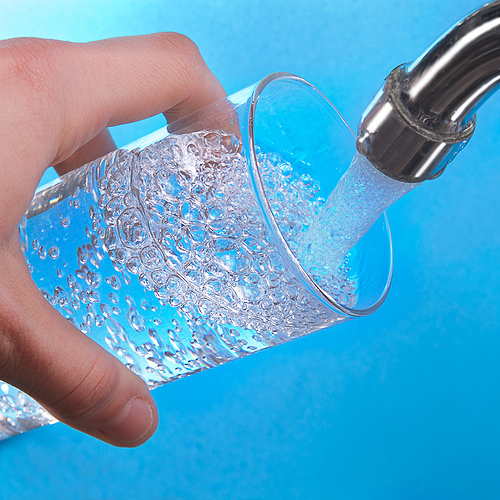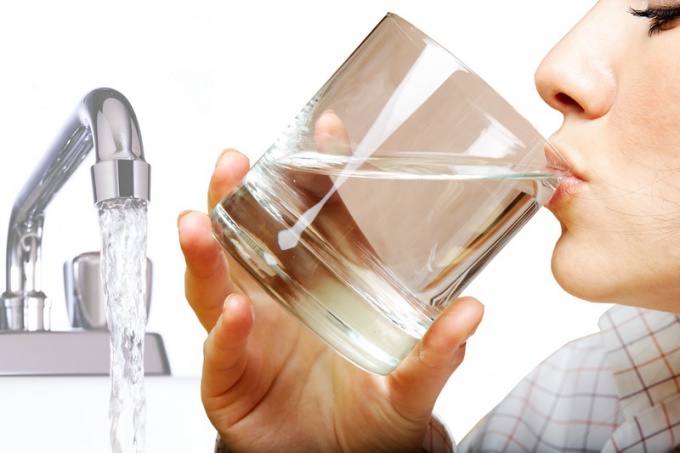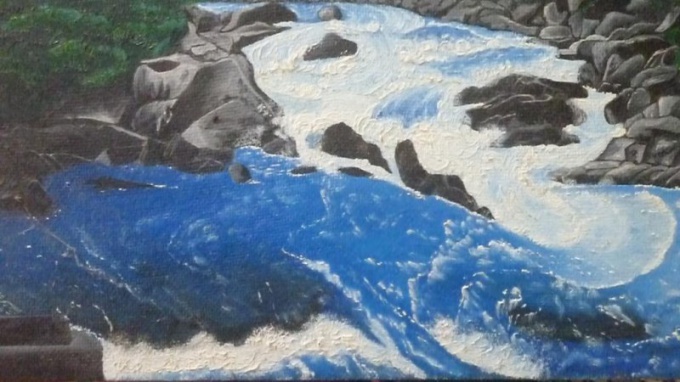Water Is an excellent strongly polar solvent. In a living nature, it is impossible to detect pure, unalloyed water - distilled water. If the water is not contained in a laboratory test tube of British scientists - it always contains gases and salts. The same applies to tap water - the one that flows from any tap.Water there are several types, but at the domestic level itit is common to divide into a soft and hard. The softness of water depends on the calcium and magnesium ions dissolved in it. In soft water, they are least of all, and so the soap in it is better foaming, and the detergent powder dissolves well, and the washing liquid is washed more easily. Hard water does not have such qualities, but it can foam itself under physical influence. For example, when boiling or strong shaking. To soften the water it is recommended to boil, in this process the main thing is often to remove the foam and filter the sediment. By the way, it is important to note that the hardness of water is variable. For example, for surface sources it varies substantially during the year. Here the stiffness is maximum at the end of winter and is minimal in the period of high water. In groundwater, rigidity is usually higher and less changes during the year. The sediment is another sign of hard or not drinking water at all. As mentioned above, there are always ions of divalent metals in the tap water, for example, calcium or magnesium, and also bicarbonate ions. When the water is heated, a reaction occurs between these substances, and a sediment forms on the walls of the vessel, which sometimes can not be washed off with detergents. This is the famous scum, called carbonate in the language of chemists. However, even soft water can foam, and there can be a great number of reasons for this. For example, the cause of foam can be a high content of organic substances. In this case, it is necessary to inquire at the city administration of the improvement or the operator of the water canal networks about how long the water supply pipes brought to your building have changed. Perhaps the problem is also in the pipes that are carried out by the apartment itself. One of the signs of high organic content in water (permanganate oxidability is more than 5 units) is its not very pleasant smell. If the water from the tap foams with all the colors of the rainbow - this is a good incentive to screw up the tap and buy up bottles of water in the near store. Color bubbles - a sign of the presence of oil in the water, which for drinking liquids, of course, is unacceptable. If the color foam from the tap does not stop, then without the participation of city authorities, this problem is unlikely to be solved - this is a problem at the water intake level. Water can also foam due to the high concentration of soluble solids, which leads to an increase in surface tension and prevents the outlet from the water vapor and gases. It is this foam can be seen when you open the bottle with mineral water. Finally, water can foam because of the high hydrogen index - the same, advertised pH. The hydrogen indicator of pure water is 7.0, and already at an index greater than 13 from the water, caustic alkalis are obtained. If the water in your tap is foaming - do not hesitate to conduct simple experiments with it, but with the first fears, call specialists - only a chemical analysis can give an accurate answer to the question of the origin of foam in seemingly drinking water.
Tip 2: How to determine the hardness of water
Rigidity is a property of water thatimplies the presence in it of cations of calcium and magnesium. The consequence of this phenomenon can be observed, for example, as a scale on heating elements (spiral electric kettle, inside the battery, etc.). Some household situations, such as washing powder dosage or dishwasher setting, require determination of water hardness. Is there a way to do this at home?

Instructions
1
Among the methods that do not require anyspecial equipment, can be attributed at least three. The first is to check if the soap foams. If foams, then water can be considered not very rigid, if not foams, then vice versa. The method is very simple, but gives only a superficial idea of the rigidity of water. The second is to reveal the intensity of the appearance of the already mentioned scale, rocky deposits on the surface of water heaters. The minus of this method is that it takes into account only temporary stiffness. The third - for real "gourmets", testing by language receptors. Rigid water has a bitter taste. Of course, the determination of water hardness by these methods can be considered only approximate.
2
For a more accurate verification, you can usehardness indicators. As a rule, they can be purchased in shops that sell goods for laboratories, hospitals, schools and universities (sets for laboratory work) or in pet stores (special compounds for water samples).
3
Among other things, it is possible to measure the hardness of water whenhelp the so-called TDS-meter. The abbreviation TDS stands for total dissolved solids, i.e. total dissolved solids content. TDS-meter is a portable, battery-operated device. It is not difficult to use it: you need to pour the test water into a container, remove the protective cap from the device, lower the electrodes into the liquid and measure.
Tip 3: How to draw realistic water
On the water, as on fire, you can watchinfinitely. If there is no way to go out into the countryside, then paint a lake, a pond or a river on paper, sometimes to imagine yourself near these objects. If you draw water correctly, it will look realistic.

Water pond and lake
Drawing is akin to magic. With the help of paints and a brush, you can create a realistic picture on a sheet of paper, where everything will look like the present. Looking at such a natural landscape, it seems that the rough mountain river is about to come out of the coast, and from the calm surface of the lake a mermaid emerges. In such paintings it is necessary to draw a realistic picture of water. After all, it is she who plays the leading role on the canvas. It is easiest to depict the calm waters with which ponds and lakes are filled. First, choose on which plan such an object will be located. Draw its borders with a pencil, drawing an oval and a circle. Will help to draw water of realistic paint: blue, blue, black. Along the edges of the lake, the pond depth is small. Therefore, this part is recreated with the help of a blue paint. The farther to the middle of the object, the darker the shades should be. It is not necessary to depict a great depth in the middle of the lake. Make a few round dark spots in different places in the pond. Paint of dark blue and white colors will help to see circles diverge on the water. And the drawing will turn out to be more realistic. It is necessary to think over which side of the light source will be used to draw shadows and reflections of the sun on the surface of the water. The latter will give good white or silver paint. River water
In the river, water does not stand still, but flows. If this is a mountain stream, then you need to transfer the direction of the river's movement with the help of a picture, show that it is restless - raging and foaming. First, create a small mountain. Let the drawn river originate from its top. Two pencil lines mark the right and left borders of the reservoir. Then with dashes that go almost parallel to this, show that the water is falling down. Near the foot of the mountain, draw a few bursts to see how much the water falls from above and flows further. If the river is not mountainous, but calm, Help several wavy lines on its surface ripples. Let the crests gleam in the sun. This effect will help to achieve gold or silver paint. You can use it in another way. After you painted the river with a blue, blue paint, wipe the wax of the waves with the wax candle. Cover them in a dark blue color. When the paints dry, take a spoke or toothpick and scratch small areas that show ripples. It will be seen how it sparkles and sparkles in the sun.










